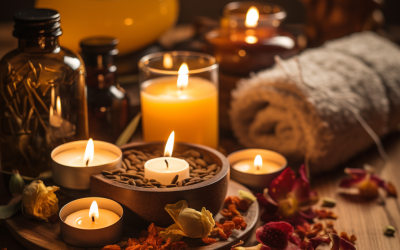Embarking on the journey of mindfulness begins with grasping its fundamental principles. Mindfulness is a practice rooted in ancient traditions, yet it continues to flourish in modern therapeutic settings due to its profound impact on mental well-being. At its core, mindfulness involves a heightened state of awareness and presence in the current moment. It’s an intentional practice where one observes their thoughts, feelings, and sensations without judgment. By cultivating such awareness, individuals can step back from their habitual reactions and gain a deeper understanding of their mind-body connection.
Mindfulness of breath, specifically, is a foundational technique that anchors this awareness. It’s a simple yet powerful method where the breath serves as a focal point to guide attention away from distractions and towards a state of calm and clarity. This technique is particularly effective in reducing stress, managing anxiety, and improving concentration. By learning to observe the breath, one can also learn to observe thoughts and emotions with a sense of detachment and equanimity.
At Health and Healing, we recognize the transformative potential that mindfulness brings to your overall well-being. Ready to kickstart your wellness journey? Sign up for our content to receive exclusive tips and updates. Take the first step towards a healthier, happier you! Join Our Community Today.!
The Role of Breath in Mindful Meditation

The breath serves as a vital bridge connecting the mind and body, playing a crucial role in the practice of mindful meditation. In the realm of mindfulness, the breath is often referred to as the ‘anchor’—a steady, reliable element one can return to amidst the ebb and flow of thoughts and emotions. The regular rhythm of inhalation and exhalation provides a natural object for the mind to focus on, helping to cultivate a state of attentive relaxation.
Engaging in a mindfulness of breath script, practitioners learn to observe the nuances of their breathing patterns. This observation allows for the recognition of subtle changes in the body that may accompany different emotional states or levels of stress. For example, one might notice shallower breathing when anxious or a relaxed and deeper breath when calm. By becoming more attuned to these signals, individuals can develop a more responsive rather than reactive approach to their internal experiences and external stimuli.
Furthermore, the act of focusing on the breath encourages a withdrawal from the constant chatter of the mind. This focus helps to still the incessant narrative, often full of past regrets and future anxieties, and fosters a tranquil space where the present moment can be experienced more fully. Through the breath, meditators often find a sense of balance and peace, which can permeate into everyday life, enhancing their overall quality of living and ability to cope with life’s challenges.
Step-by-Step Guide to Mindfulness of Breath

Embarking on the journey of mindfulness through breath work begins with understanding and following a series of deliberate steps. These steps guide practitioners into a deeper state of awareness and tranquility. Here is a step-by-step guide to help you navigate the process:
- Find a Quiet Space: Select a peaceful location where you won’t be disturbed. This physical space should promote relaxation and be free from external distractions.
- Adopt a Comfortable Posture: Sit or lie down in a comfortable position. Maintain a posture that is alert yet relaxed, with a straight back to encourage clear and unobstructed breathing.
- Close Your Eyes: Gently close your eyes or lower your gaze. This helps to withdraw attention from the external environment and direct it inwards towards your breath.
- Bring Awareness to Your Breath: Without attempting to change it, notice the natural rhythm of your breathing. Pay attention to the sensations of air entering through your nostrils, filling your lungs, and leaving your body.
- Notice the Details: Observe the subtle aspects of each breath, such as the slight pause between inhalation and exhalation and the temperature and texture of the air.
- Return to the Breath: Whenever your mind wanders, acknowledge the distraction and gently bring your focus back to the breath. This act of returning to the breath is the essence of mindfulness practice.
- Maintain the Practice: Continue to observe your breath for a set period, typically 5-20 minutes for beginners. Use a timer if necessary to maintain this discipline.
As you proceed with this mindfulness of breath script, remember that the goal is not to empty the mind of thoughts but to notice them without judgment and refocus on the breath. With consistent practice, this simple yet profound technique can lead to enhanced well-being and a more mindful presence in everyday life.
Deepening Your Practice with Breathing Techniques

Deepening your mindfulness practice is akin to cultivating a garden; it requires patience, care, and the right techniques. As you become more familiar with the mindfulness of breath script, incorporating varied breathing techniques can enhance the quality of your practice and bring about profound mental clarity and emotional balance.
Here are some techniques to deepen your mindfulness practice:
- Counting Breaths: Counting each inhale and exhale can help maintain focus and prevent the mind from wandering. Start with counting to four on the inhale and to six on the exhale, gradually increasing the duration as you become more comfortable.
- 4-7-8 Breathing: Also known as the relaxing breath, this technique involves breathing in for a count of four, holding the breath for a count of seven, and exhaling for a count of eight. This pattern promotes relaxation and has been shown to reduce anxiety.
- Diaphragmatic Breathing: Place one hand on your abdomen and the other on your chest. As you breathe, focus on making the hand on your abdomen rise more than the one on your chest. This encourages full oxygen exchange and is particularly effective for stress reduction.
- Alternate Nostril Breathing: This technique involves gently closing one nostril while inhaling through the other and then switching nostrils for the exhale. It is thought to balance the left and right hemispheres of the brain and is used to calm the nervous system.
Integrating these techniques into your daily routine can profoundly impact your mindfulness journey. They can be adapted to suit individual needs and preferences, allowing each practitioner to explore their unique path to inner peace. As with any mindfulness practice, the key is consistency and a non-judgmental attitude towards oneself as you explore the depth of your breath and mind.
Common Challenges and Tips for Mindful Breathing
Mindful breathing, while simple in concept, often presents challenges even to those who have been practicing for some time. Distractions, restlessness, and self-criticism are common obstacles that can disrupt your mindfulness of breath script. However, with the right approach, these hurdles can be overcome.
Distractions are a natural part of the mindfulness journey. Whether external noises or internal thoughts, they can shift your focus away from your breathing. The key is to acknowledge these distractions without judgment and gently return your attention to your breath. With time, you’ll find it easier to maintain focus amidst disruptions.
Restlessness can also pose a challenge, especially when you’re expected to sit still for extended periods. If you find yourself becoming restless, it may help to change your posture or practice a more active form of mindfulness, like walking meditation, where movement can aid in focusing on the present moment.
Self-criticism is perhaps the most insidious obstacle, as it can erode the very foundation of mindfulness, which is non-judgmental awareness. Remember that mindfulness is not about achieving a state of perfect calm, but rather about observing your experiences as they are. If critical thoughts arise, treat them as any other thought: notice them and then bring your focus back to your breath.
Here are some tips to help navigate these challenges:
- Set Realistic Expectations: Understand that it’s normal for the mind to wander; it doesn’t mean you’re doing it wrong.
- Embrace a Beginner’s Mind: Approach each practice with curiosity and openness, as if it’s your first time.
- Create a Conducive Environment: Choose a quiet, comfortable space where you are less likely to be disturbed.
- Use Guided Practices: Guided mindfulness of breath scripts can provide structure and support, especially when you’re starting out or facing persistent challenges.
- Be Kind to Yourself: Cultivate self-compassion and recognize that each moment is a new opportunity to return to your breath.
By embracing these tips and acknowledging the common challenges as part of the process, you can continue to grow in your mindfulness practice and enjoy the myriad benefits it brings to your mental and emotional well-being.
Integrating Mindfulness of Breath into Daily Life

Incorporating the practice of mindfulness of breath into daily life can transform mundane routines into moments of peace and clarity. The beauty of this practice lies in its flexibility and accessibility; it can be adapted to any time and place, allowing you to cultivate mindfulness throughout your day.
Start by identifying moments in your routine that can serve as cues for mindfulness. This could be your morning coffee, waiting in line, or the transition between tasks. Use these moments to take several deep, conscious breaths, anchoring your attention to the sensation of the air moving in and out of your body. The goal is not to change your routine but to infuse it with awareness.
Another effective method is to set reminders on your phone or computer. These gentle nudges can prompt you to pause and practice a brief mindfulness of breath script, re-centering your focus amidst the busyness of life. Even a few minutes of mindful breathing can significantly reduce stress and increase your overall sense of well-being.
Additionally, consider integrating mindfulness into your physical activities, such as walking or exercising. By synchronizing your breath with your movements, you can create a meditative experience that not only benefits your body but also calms your mind.
As you explore integrating mindful breathing into your daily routine, you may wish to connect with others on a similar path. Join Our Community Today! and sign up for our content to receive exclusive tips and updates. Take the first step towards a healthier, happier you and let us support you in your wellness journey.
Embracing mindfulness of breath as a regular practice can help you navigate life’s ups and downs with greater ease and resilience. With each mindful breath, you’re investing in your long-term health and happiness, nurturing a mindful lifestyle that benefits both mind and body.
Elizabeth Redd: I am a passionate advocate for Health and Healing, dedicated to empowering individuals to live their best lives.
As the founder and publisher of Health and Healing, I have established myself as a guiding force in the wellness industry.
I am committed to providing the latest research, holistic approaches, and inspiring stories to open new possibilities for your health and healing journey.
Learn more about Elizabeth and Join Us at Health and Healing. Also, check out My About Page.






0 Comments